安装:
pip install allure-pytest
使用:
修改pytest的ini文件:
指定allure报告文件和生成的测试文件目录:

在命令行中:
allure generate report/result --clean -o report/html
--clean是覆盖,如果这个目录已存在,就会覆盖,-o是指定生成的目录位置
在使用时,导入allure,然后给测试用例加上装饰器:@allure

title 可自定义标题
description 测试用例详细说明
feature 定义功能模块,往下是story
story 定义用户故事
serverity 定义用例级别,主要有blocker,critical,minor,normal,trivial等几种类型,默认是normal
allure.dynamic 动态设置相关配置
对于feature和story的效果,类似与一级标签与二级标签,在代码和报告中体现如下:
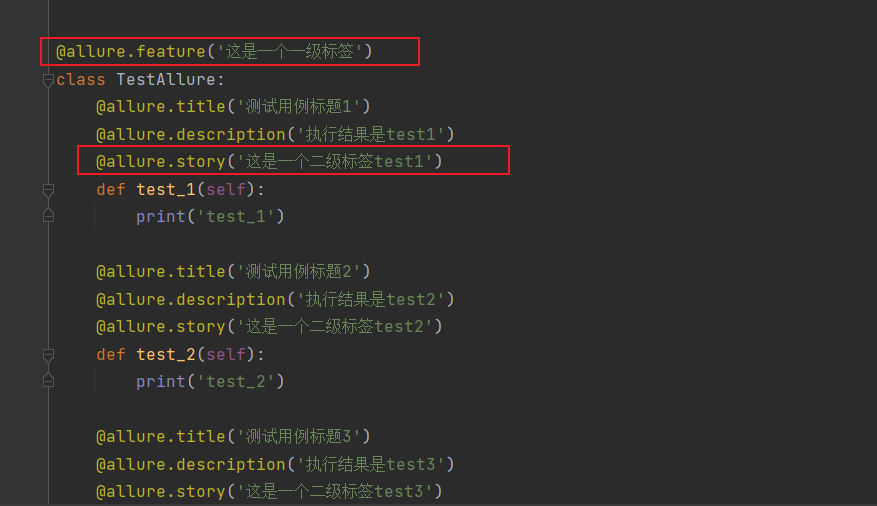
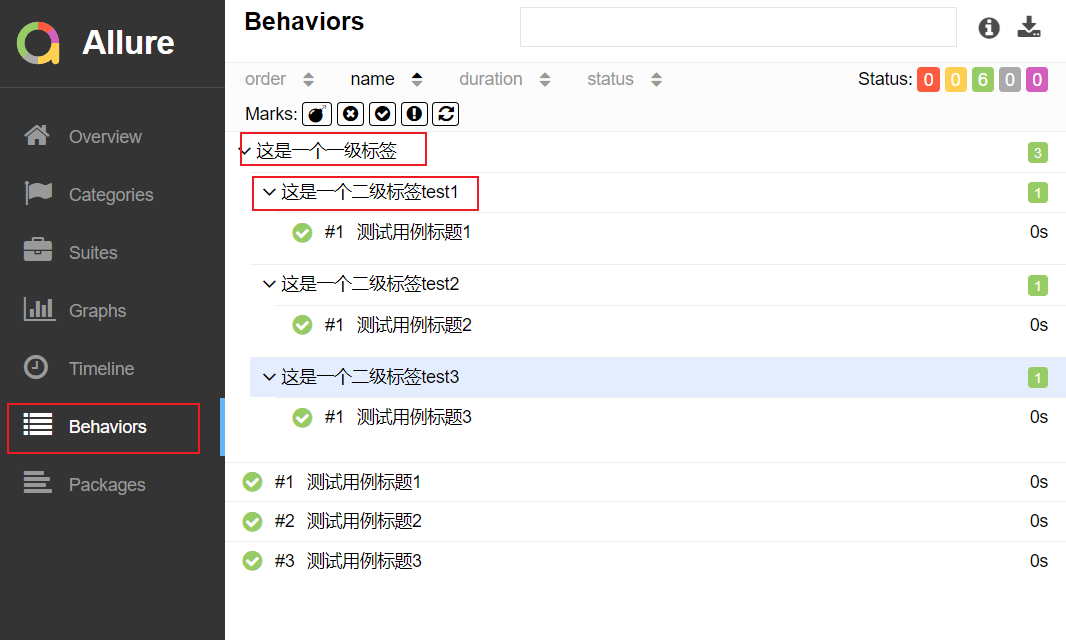
serverity 效果如下:

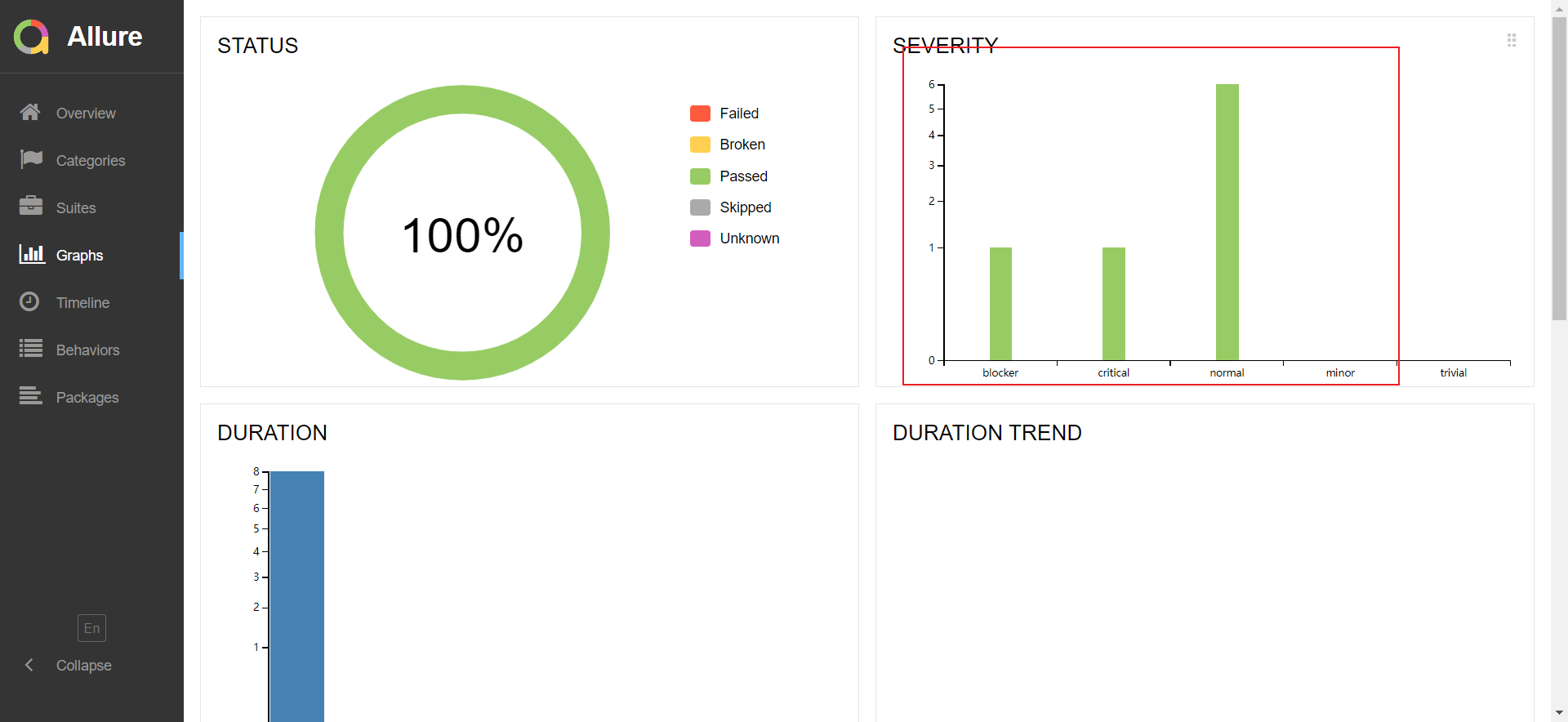
动态参数获取效果如下:
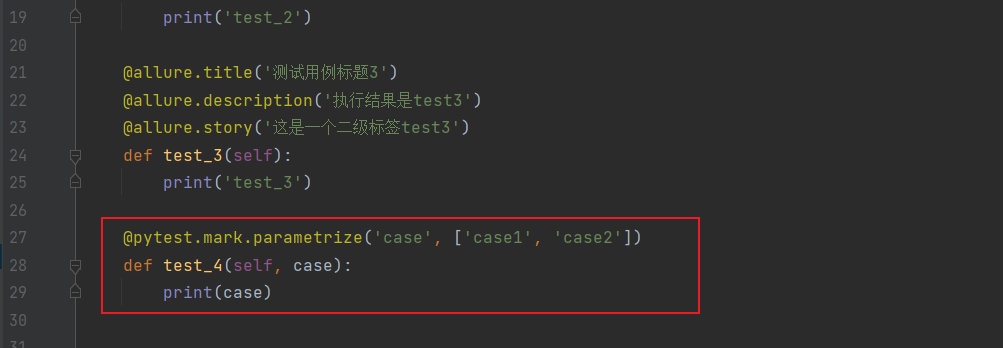
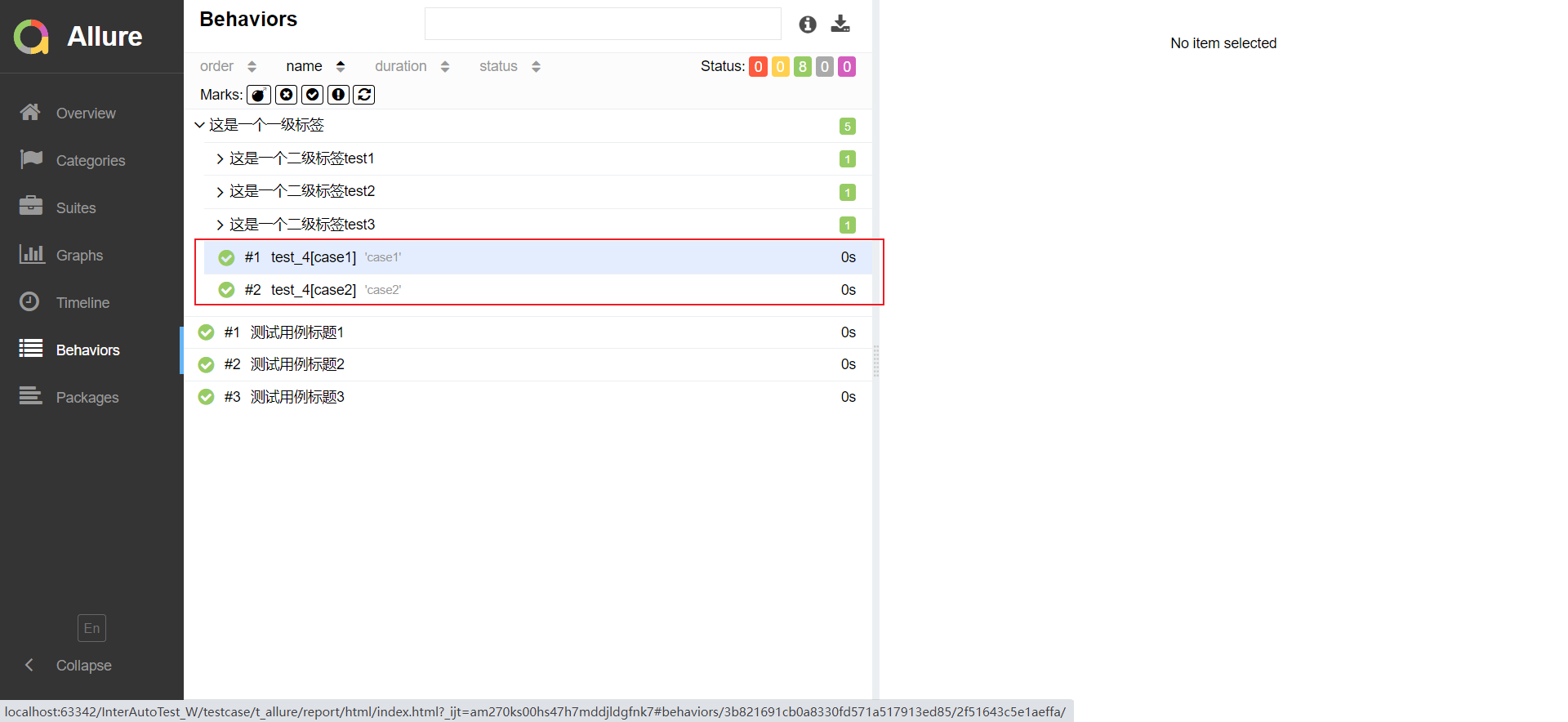
动态参数在用例内部使用效果如下:
# allure
# sheet名称 feature 一级标签
allure.dynamic.feature(sheet_name)
# 模块 story 二级标签
allure.dynamic.story(case_model)
# 用例id+接口名称 title
allure.dynamic.title(case_id + case_name)
# 请求url 请求类型 期望结果 实际结果描述 description
desc = "<font color='red'>请求url:{} </font><Br />请求类型:{}<Br/>预期结果:{}<Br/>实际结果:{}".format(url, method, expect_result, res)
allure.dynamic.description_html(desc)
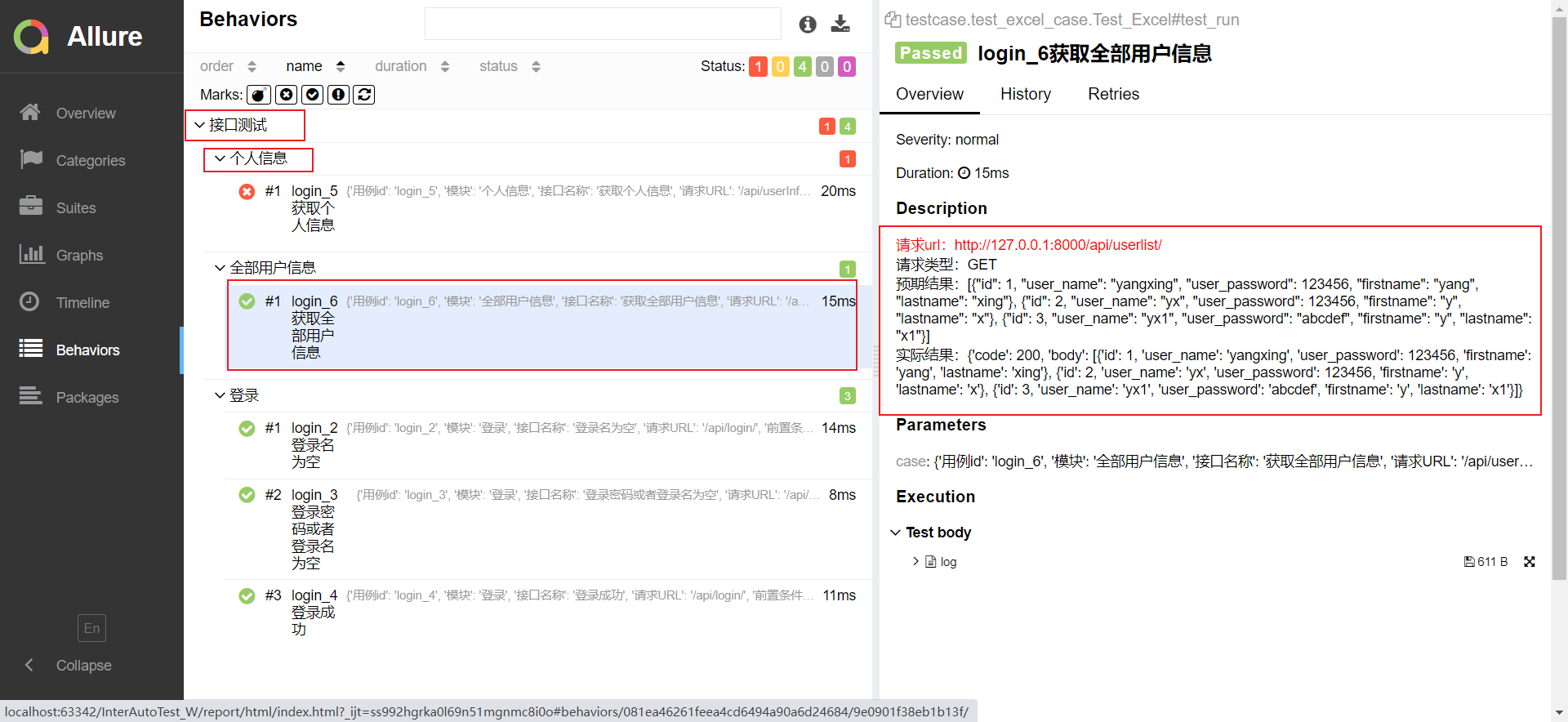
使用subprocess自动生成测试报告:
定义方法:
def allure_report(result_path, html_path):
allure_cmd = 'allure generate %s -o %s --clean' % (result_path, html_path)
my_log().info('测试报告地址:%s' % html_path)
try:
subprocess.call(allure_cmd, shell=True)
except:
my_log().error('执行用例失败,请检查测试环境相关配置')
raise
在用例中指定allure的根目录,并设置对应result文件和HTML文件的路径:
if __name__ == '__main__':
report_path = get_report_path() + os.sep + 'result'
report_html_path = get_report_path() + os.sep + 'html'
pytest.main(['-s', 'test_excel_case.py','--alluredir',report_path])
Base.allure_report(report_path,report_html_path)
get_report_path如下:
